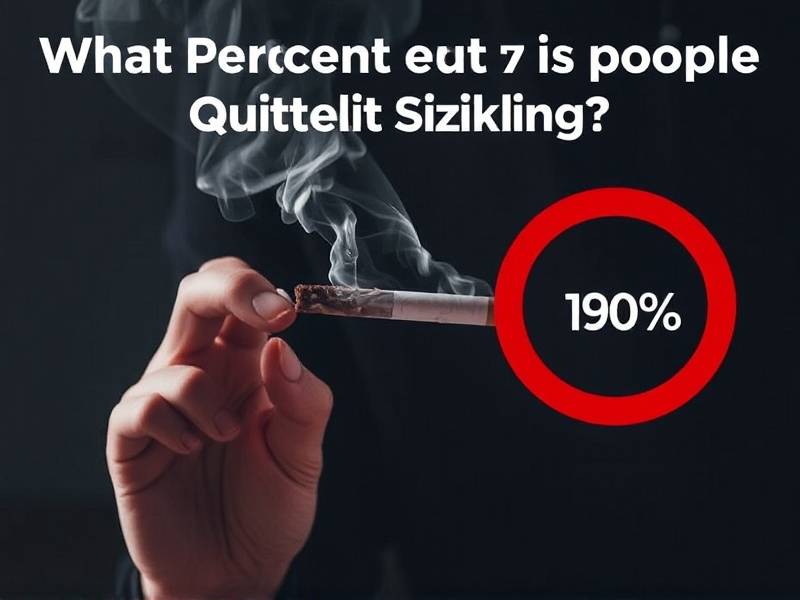What Percentage of People Quit Smoking?
The Quest to Quit Smoking: What Percentage of Smokers Succeed?
Introduction: The journey to quit smoking is a challenging one, with many smokers struggling to overcome their addiction. One of the most common questions that arise among smokers and those who care about them is: "What percentage of people actually quit smoking?" This article delves into this question, exploring the factors that contribute to successful quitting and shedding light on the statistics behind this crucial issue.
I. Understanding the Challenge: Smoking is a deeply ingrained habit, often accompanied by physical and psychological dependencies. The addiction makes it difficult for smokers to quit, leading to a high relapse rate. According to the Centers for Disease Control and Prevention (CDC), approximately 70 million Americans have tried to quit smoking at some point in their lives.

II. Factors Influencing Quitting Success: Several factors play a role in determining the success rate of quitting smoking. These include:
A. Determination and Support: Individual determination and support from friends, family, or support groups can significantly impact quitting success. A strong mindset and social support network can help smokers stay motivated during challenging times.
B. Nicotine Replacement Therapy (NRT): Nicotine replacement therapy products, such as patches, gum, lozenges, inhalers, and nasal sprays, can help alleviate withdrawal symptoms and cravings. Studies have shown that NRT doubles the chances of quitting successfully.
C. Medications: Prescription medications like varenicline (Chantix) and bupropion (Zyban) have been found to be effective in treating nicotine addiction by reducing cravings and withdrawal symptoms.
D. Behavioral Strategies: Behavioral strategies such as cognitive-behavioral therapy (CBT) can help smokers identify triggers that lead them back to smoking and develop coping mechanisms for overcoming these challenges.
III. Success Rates by Method: The success rates for quitting smoking vary depending on the method used:
A. Cold Turkey: Quitting without any assistance has a low success rate of around 5-7%.
B. Nicotine Replacement Therapy (NRT): Using NRT can increase the chances of quitting successfully up to 15-22%.

C. Prescription Medications: Combining prescription medications with behavioral strategies can raise the success rate up to 25-35%.
D. Combination Approach: A combination of NRT, prescription medications, behavioral strategies, and social support can yield even higher success rates.
IV. Long-Term Success: Long-term success in quitting smoking is crucial for maintaining good health outcomes. According to research published in The Lancet Respiratory Medicine journal, individuals who quit smoking between ages 35-44 years reduce their risk of death from smoking-related diseases by about half within 15 years after quitting.
Conclusion: The quest to quit smoking is a challenging but achievable goal for many individuals worldwide. Understanding the factors influencing quitting success and exploring various methods can increase one's chances of long-term success in breaking free from nicotine addiction. While statistics may vary depending on individual circumstances, it's essential for smokers seeking freedom from tobacco dependence to be aware of available resources and support systems that can help them on their journey towards a smoke-free life.
